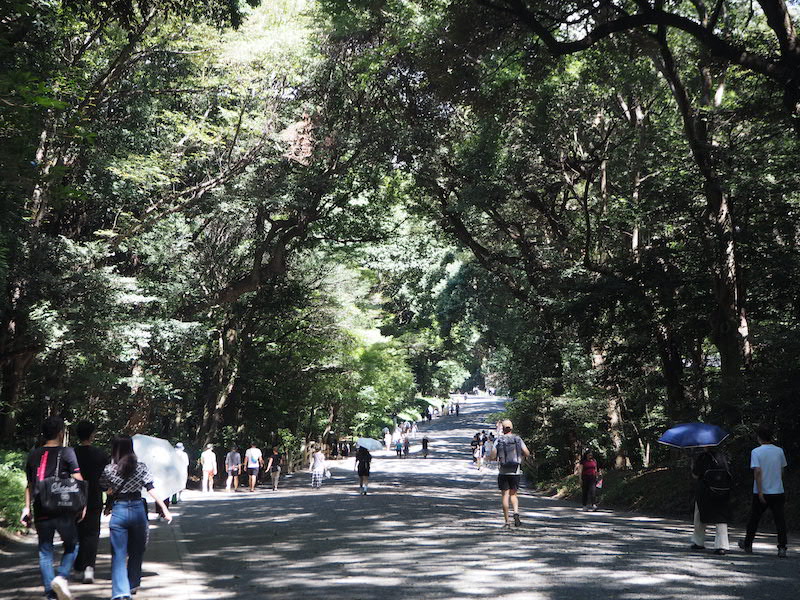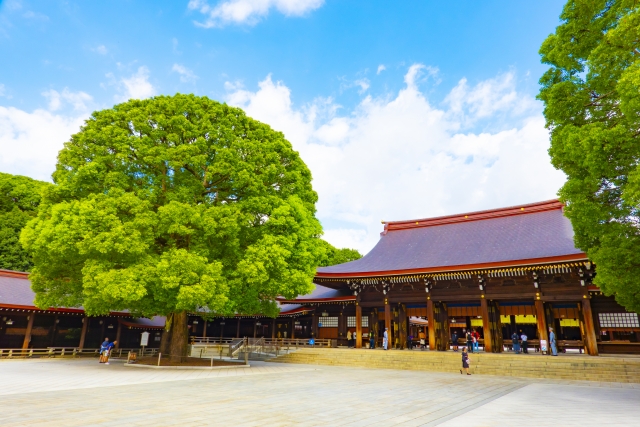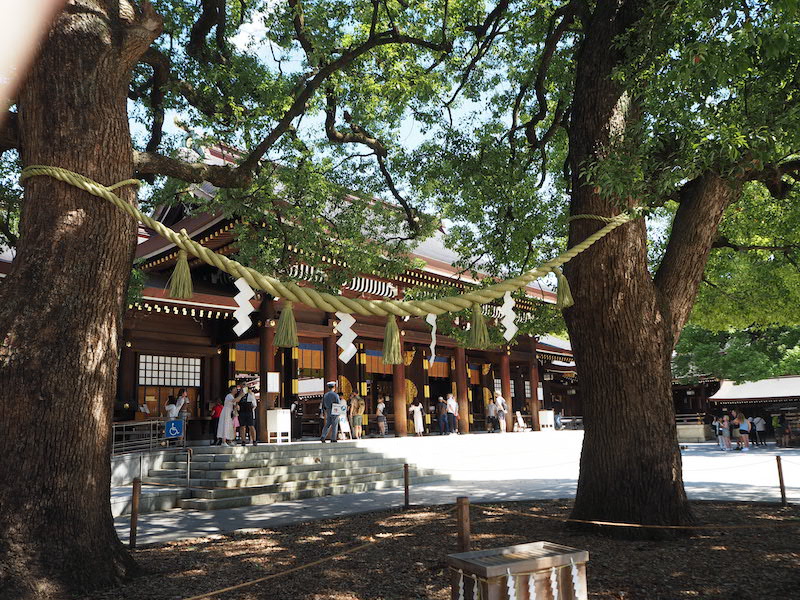Embrace the Bustle and Silence
A Century-Old Oasis
Epicenter of Youth Culture
Meiji-Jingu Shrine, where the spirit of Emperor Meiji resides, surrounded by a vast forest, transporting you away from the heart of Tokyo. Just beyond the JR Yamanote Line tracks lies Harajuku, a bustling fashion hub where youth culture thrives along Takeshita Street. A few steps further, arrive at Omotesando, a boulevard lined with upscale shops catering to a more mature audience. Enjoy the coexistence of hustle and tranquility in this city where both worlds collide.

The Grand Torii (Second Torii) stands at the intersection of the South and North Approaches. It boasts a height of 12 meters, a width of 17.1 meters, and weighs about 13 tons. Crafted from a Taiwanese cypress estimated to be around 1,500 years old.

These are sake barrels donated by breweries across the country. Across from them, there are wine barrels donated from France on display.

The forest surrounding the shrine was artificially created. About a century ago, scholars who had studied forestry in Germany envisioned the future and designed it.

The main hall of this shrine enshrines Emperor Meiji and Empress Shoken. It was established in 1920. Approximately 3 million people visit for the first shrine visit of the year.

The entrance to Takeshita Street. There are numerous shops lining a street spanning about 350 meters. This area serves as the epicenter of ‘kawaii’ culture.

Omotesando is the main approach to Meiji Shrine. Lined with neatly arranged Zelkova trees, it offers beautiful autumn foliage. While hosting upscale shops, it’s known as a street catering to a slightly older demographic than Takeshita Street, yet younger than Ginza—a bridge between mature tastes and youthful energy

